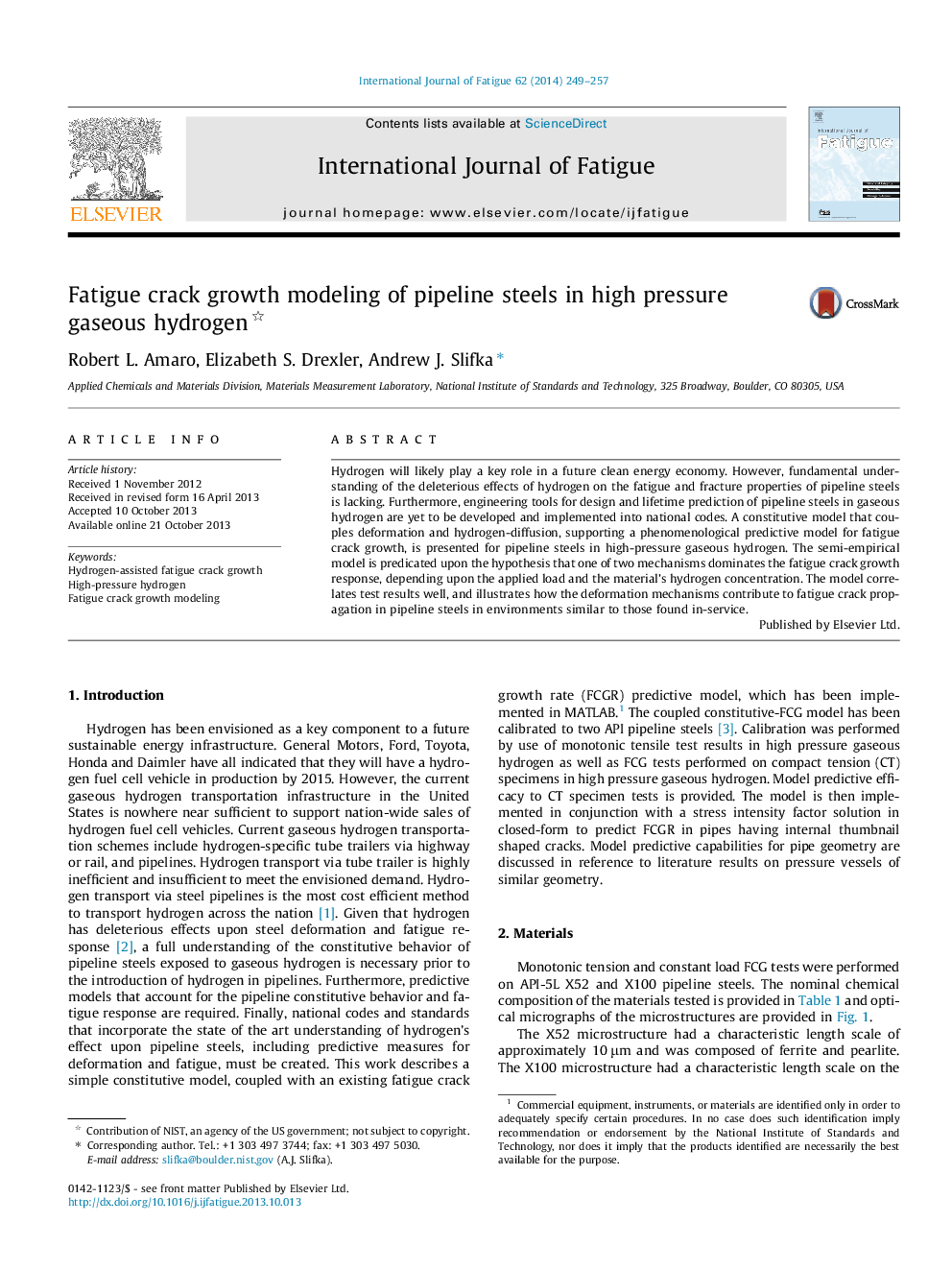| Article ID | Journal | Published Year | Pages | File Type |
|---|---|---|---|---|
| 7172349 | International Journal of Fatigue | 2014 | 9 Pages |
Abstract
Hydrogen will likely play a key role in a future clean energy economy. However, fundamental understanding of the deleterious effects of hydrogen on the fatigue and fracture properties of pipeline steels is lacking. Furthermore, engineering tools for design and lifetime prediction of pipeline steels in gaseous hydrogen are yet to be developed and implemented into national codes. A constitutive model that couples deformation and hydrogen-diffusion, supporting a phenomenological predictive model for fatigue crack growth, is presented for pipeline steels in high-pressure gaseous hydrogen. The semi-empirical model is predicated upon the hypothesis that one of two mechanisms dominates the fatigue crack growth response, depending upon the applied load and the material's hydrogen concentration. The model correlates test results well, and illustrates how the deformation mechanisms contribute to fatigue crack propagation in pipeline steels in environments similar to those found in-service.
Related Topics
Physical Sciences and Engineering
Engineering
Mechanical Engineering
Authors
Robert L. Amaro, Elizabeth S. Drexler, Andrew J. Slifka,
